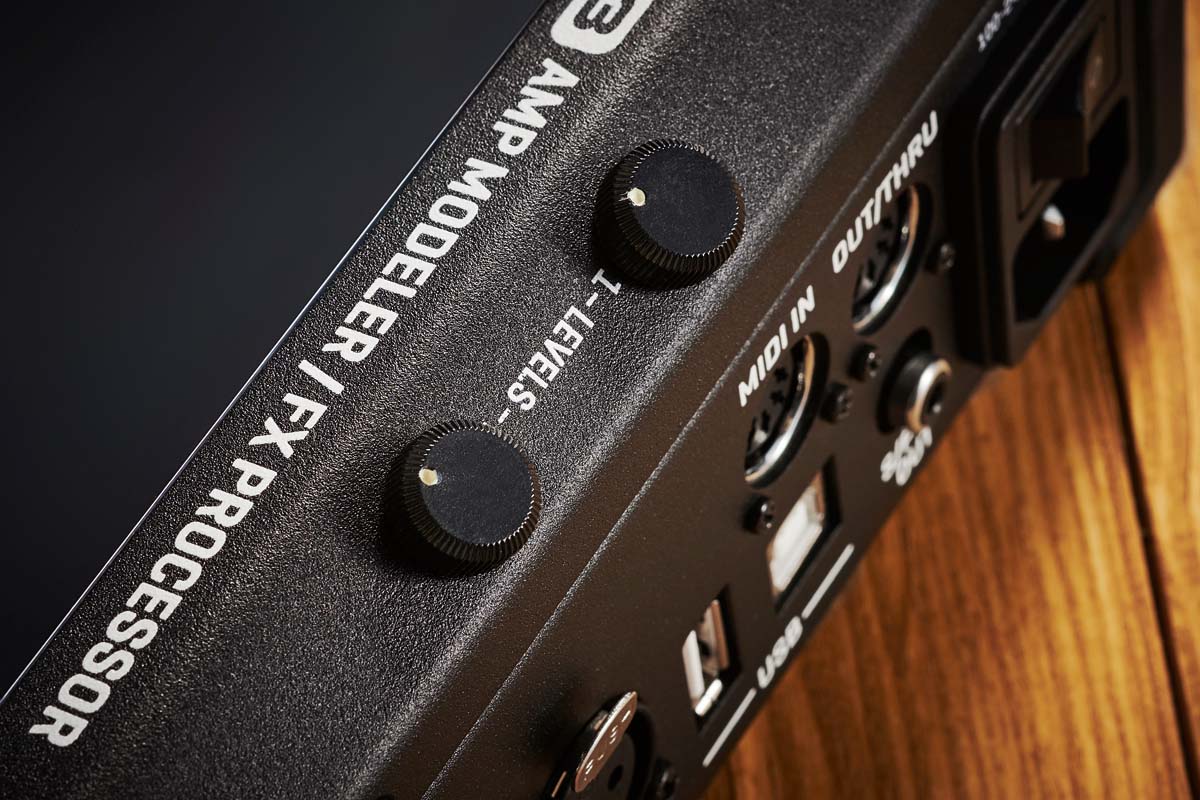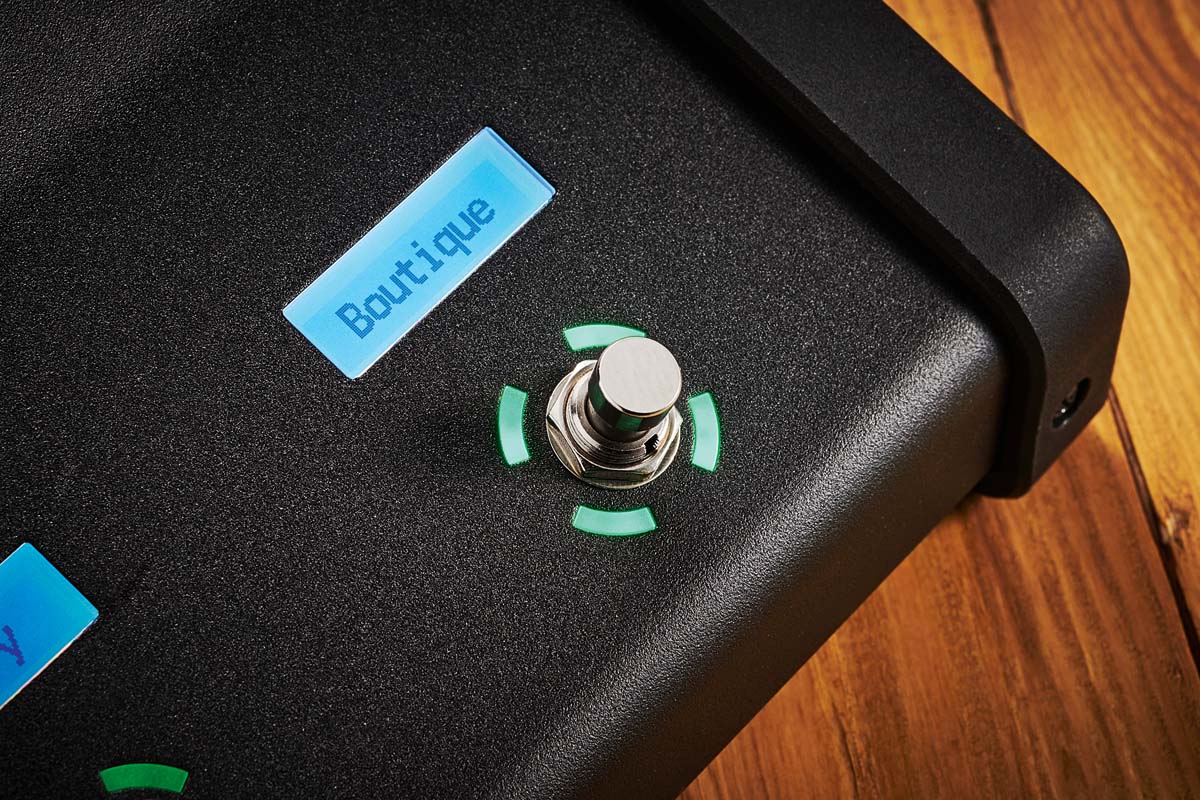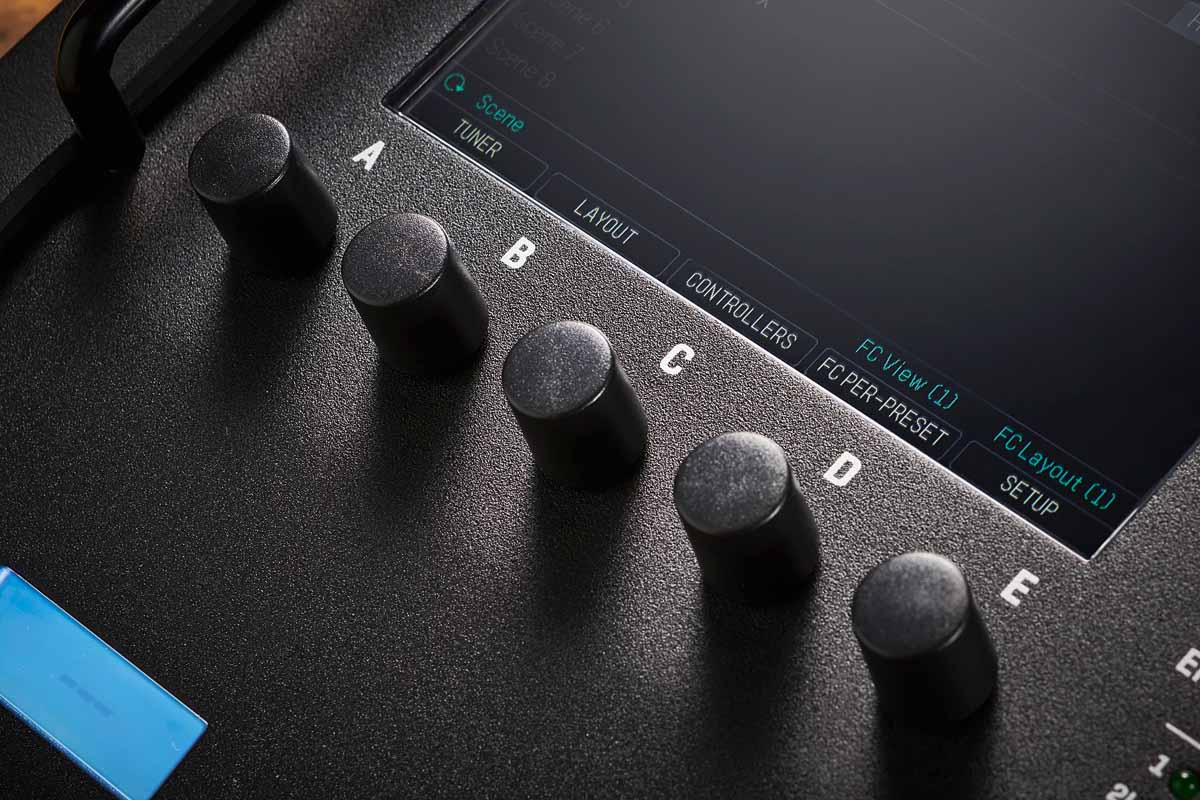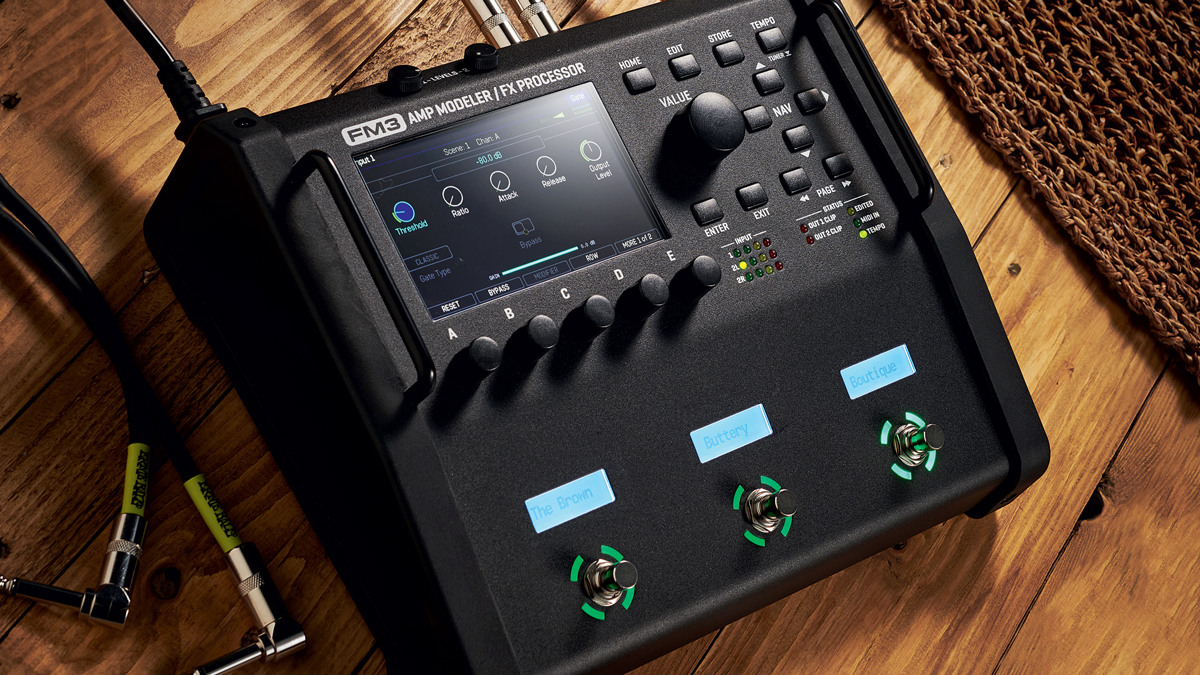Guitar World Verdict
Fractal's modelling power in a unit small enough to throw in a backpack and take to a show? Yes, please. The FM3 offers a vast array of amp and effects tones. Use it as a standalone fly rig or as part of your existing setup – the possibilities are endless.
Pros
- +
Sound quality.
- +
Huge range of amps and effects.
- +
Deep parameter editing.
- +
Workable size.
- +
Headphone output and audio interface.
- +
Clever use of three footswitches.
- +
Easily expandable foot-switching.
- +
Intuitive computer-based editor.
Cons
- -
Glitchy audio recording and playback at present.
You can trust Guitar World
Fractal Audio’s take on amp modelling has plenty of admirers but when its flagship Axe-Fx III rackmount unit is combined with one of the FC-6 or FC-12 controllers for a fully functional stage/studio rig it doesn’t come cheap.
If you fancy some of that, though, the new FM3 offers a more affordable option. It’s the company’s only all-in-one floor unit now that the AX8 and FX8 are discontinued, and offers amp modelling, effects and the ability to use IRs.
While having about half of the processing power of the Axe-Fx III, it still comes with heavy-duty DSP and offers the same ARES amp modelling. There’s plenty of connectivity including an effects loop, headphone output, expression pedal inputs and a FASLINK II port, which supports the connection of FC controllers for up to 24 additional footswitches.
A USB connection allows computer-based editing, preset sharing and firmware updates, plus the unit can also function as a USB audio interface.

In Use
One of Fractal’s design goals with the FM3 was to create a rugged giggable unit for anyone who wanted to leave their rackmount Axe-Fx model at home – and it’s certainly solidly put together with a heavy-duty steel chassis protected with tough rubber end-caps that double as non-slip feet.
This unit is the same form factor and footprint as the FC-6 controller for a side-by-side fit. Any Axe-Fx III users should be familiar with the FM3 as it sports the same display and control layout and is similarly based around 512 onboard presets, which can each accommodate a range of variations.
Each preset is built from component blocks placed in a 12x4 grid and joined by virtual cables from which you can build a range of signal paths – splitting or merging them or running them in parallel.
The Axe-Fx III, with its 14x6 grid, offers larger rigs, especially as it has two amp blocks as opposed to the FM3’s one, but the FM3 doesn’t really miss out on the variety of blocks.

There are some things missing, such as a vocoder, but the essential stuff is all present and correct – there’s just less of it, like two Drive and two Delay blocks, instead of four each on the Axe-Fx III. Each block has access to a range of different models: there are 269 amps while the Drive block has 43.
As for cabinets, there’s every factory cab from the Axe-Fx III plus 1,024 User Cab memory locations. Each block also has up to four Channels, so a Drive block could provide access to four different overdrive pedals or perhaps the same pedal with four different settings.
All of that comes into play when you’re switching between Scenes, which are like presets within a preset. You can have up to eight of these per preset, each storing the engaged or bypassed status of the blocks and their active Channel for a range of alternative versions of the preset’s rig, maybe with different levels of gain for an amp and/or different effects engaged – there are myriad possibilities.
Scenes may be the way to go when using the unit live as switching is more seamless than reloading an entire preset. You could set up one preset with all the Scenes you need for a song (or even a full set) and switch Scenes when needed.

While there are only three physical footswitches, there are many ways to use them: 12 footswitches – each with one Tap and one Hold function – are defined in the eight different switch ‘layouts’. Usually a press-and-hold on the left or right footswitches will move to the next set of three footswitches in the 12.
In the Effects layout, for example, that function can be used to change which three effects are controlled by the physical footswitches, while in the Scenes layout it offers a different set of scenes across the switches.
The factory presets deliver some superb tones that play and sound great straight out of the box
For changing functions on the fly, a press-and-hold on the central footswitch can take you to the Master Layout where the three footswitches let you select the Presets, Scenes or Effects layout. The Tap and Hold footswitch functions are fully customisable, so it’s quite feasible to do things like use one footswitch to, say, toggle between Scenes 1 and 2 with a tap and go to Scene 3 with a hold.
With all this functionality, three physical footswitches should be plenty – as long as you have them organised!

Sound Quality
The factory presets deliver some superb tones that play and sound great straight out of the box. Some simply focus on a single amp but there are many that are much more complex and effects-laden, taking full advantage of the full complement of reverb, delay, compression, EQ, filter, chorus, flanger, phaser, pitch-shift, rotary, tremolo, synth, wah and more.
The amp selection is eclectic with plenty of mainstream Fender, Marshall and so on, alongside more obscure boutique offerings. It’s hard to pick a favourite but we particularly liked the Band Commander model of a ’68 Bandmaster for classic Fender tone.
While it’s easy to create your own presets from scratch without digging too deep, there are advanced parameters and loads of detail if you want to use it. Overall, the FM3 really impresses.
Our only note of caution is that, while the 4x4 USB audio interface is flexibly set up for recording and reamping tasks, we found it had glitching issues with our Mac/Logic setup, although Fractal tells us that an imminent firmware update will fix that.
Verdict
The FM3 is the best opportunity yet to buy into Fractal modelling and is likely to give you all the tones you’ll need for recording, complete with the ability to dive deep and tailor sounds to the nth degree.
For live work it ticks all the boxes as a compact self-contained ‘fly rig’ that you can just stick in a backpack and run into the PA or FRFR speakers for a fully processed amp/effects/mic’d speaker sound, but it also has the flexibility to slot into a conventional amp and pedals setup as a source of high-class effects.
Specifications
- PRICE: €1,266
- ORIGIN: USA
- TYPE: Amp and effects modelling floorboard
- FEATURES: 3-Core ‘Griffin’ DSP with 1x ARM and 2x SHARC+ cores, 4-in/4-out audio interface, tuner, looper, MIDI, 512 preset slots
- CONTROLS: Level 1, Level 2, 3x footswitches, 5x soft knobs (A, B, C, D, E), Value knob, 4-way cursor, 4x buttons, ground lift switch
- CONNECTIONS: Standard guitar input, standard stereo phones output,
- XLR Main outputs (L&R), standard Out 2/FX Send (L&R), standard In 2/FX Return (L&R), Pedal 1, Pedal 2, FASLINK II, MIDI In, MIDI Out/Thru, USB x 2, S/PDIF digital out
- POWER: IEC mains supply
- DIMENSIONS: 281 (w) x 236 (d) x 103mm (h)
- CONTACT: Fractal Audio Systems
Trevor Curwen has played guitar for several decades – he's also mimed it on the UK's Top of the Pops. Much of his working life, though, has been spent behind the mixing desk, during which time he has built up a solid collection of the guitars, amps and pedals needed to cover just about any studio session. He writes pedal reviews for Guitarist and has contributed to Total Guitar, MusicRadar and Future Music among others.
“If you’re a young guitar player, that’s money well spent”: John Mayer names the pedal he thinks every young guitar player should consider buying
“An effortless way to customize your TONEX pedals for the stage”: IK Multimedia answers players’ prayers and gives its best-selling TONEX units their biggest upgrade to date – a dedicated editor












